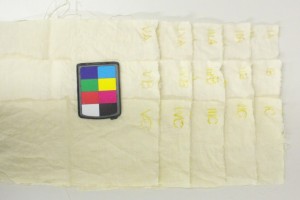Search the Blog
Latest Comments
Bounty Hunter Seeds
Tomato Seeds.
02. November 2024
Thank you for taking the time to share such valuable insights! This post is packed with helpful info...
Miriam Griffiths
Blog Pause...
01. November 2024
Hope you have a most wonderful time! One day, I really should get organised and join you.
Katrin
Cardboard Churches!
18. Oktober 2024
I didn't know there's foldable models - I will have a look into that, thank you!
Katrin
Cardboard Churches!
18. Oktober 2024
I'm very happy that you enjoyed it, and hope you will have lots of fun with the models! Hanging them...
Natalie Ferguson
Cardboard Churches!
17. Oktober 2024
Isn't this the happiest thing I've met today! You may guess that one or two will be winging their wa...
Breaking things, repairing things, twisting templates. And linen dyeing.
I spent the morning going more into the up-and-coming relaunch, and I did manage to do a test migration into WordPress, so there will be some changes to this blog's looks before the year will end.
The new shop design is also coming along nicely. It will be much lighter, and much cleaner, and there will be larger pictures. Overall, I really like it a lot! There's still a few issues to be solved and snags to be taken care of, and changing the old pallia.net site over into Joomla will mean a bit of re-writing of text and menu restructures (read: a good bit of work, including thinking and figuring out the best way for stuff), but I have hopes it will all work out eventually.
Apart from that, I managed to break my xampp programme (the thing required to test-drive a web page on your own computer, under the charming name of "localhost") and to actually fix it again (by deleting a single line of code that had crept in through an aborted installation of WordPress). Whew!
Now, however, I will have to put this project aside for a bit, as the Textile Forum is coming up (I can't believe it is already almost November) and there's still a few things to prepare for it. Packing linen cloth for our next test run regarding linen dyeing, for instance!
Sabine and I have been thinking about the chemistry involved with dyeing linen for a few years now, and we did a first trial run on exploring linen dyeing at last year's forum. One of the possible influences on how well the linen takes the mordant (which is usually not very well at all) is the pH of the mordanting and dyeing liquid, so we set out to test this.
We'll try different concentrations of alum this time. We've also planned to test a pre-treatment with sulphur fumes, though the required sulphur strips have not arrived yet - I'll keep my fingers crossed that they will come today.
The reason for sulphur pre-treatment? It seems that the metal components of the mordant bind to wool through a connection to the sulphur bonds the wool has. So if it's possible to sulphurise the linen, it might be possible to have a much better mordant uptake, and thus dye uptake. Next week we'll know more!
The new shop design is also coming along nicely. It will be much lighter, and much cleaner, and there will be larger pictures. Overall, I really like it a lot! There's still a few issues to be solved and snags to be taken care of, and changing the old pallia.net site over into Joomla will mean a bit of re-writing of text and menu restructures (read: a good bit of work, including thinking and figuring out the best way for stuff), but I have hopes it will all work out eventually.
Apart from that, I managed to break my xampp programme (the thing required to test-drive a web page on your own computer, under the charming name of "localhost") and to actually fix it again (by deleting a single line of code that had crept in through an aborted installation of WordPress). Whew!
Now, however, I will have to put this project aside for a bit, as the Textile Forum is coming up (I can't believe it is already almost November) and there's still a few things to prepare for it. Packing linen cloth for our next test run regarding linen dyeing, for instance!
Sabine and I have been thinking about the chemistry involved with dyeing linen for a few years now, and we did a first trial run on exploring linen dyeing at last year's forum. One of the possible influences on how well the linen takes the mordant (which is usually not very well at all) is the pH of the mordanting and dyeing liquid, so we set out to test this.
 |
| Last year's test results. As you can clearly see, there was not much dye taken up by the linen fabric, regardless of the pH adjustment of the mordanting and dyeing baths. |
The reason for sulphur pre-treatment? It seems that the metal components of the mordant bind to wool through a connection to the sulphur bonds the wool has. So if it's possible to sulphurise the linen, it might be possible to have a much better mordant uptake, and thus dye uptake. Next week we'll know more!
Comments 2
Out of curiosity, what type of alum do you use as a mordant for your experiments? I was taught to use alum acetate for cotton and other cellulose fibers. The other method I've used was premordant with tannin, then alum and again with tannin. That got me good color with madder and osage orange.
a stitch in time
(website)
on Freitag, 30. Oktober 2015 10:51



